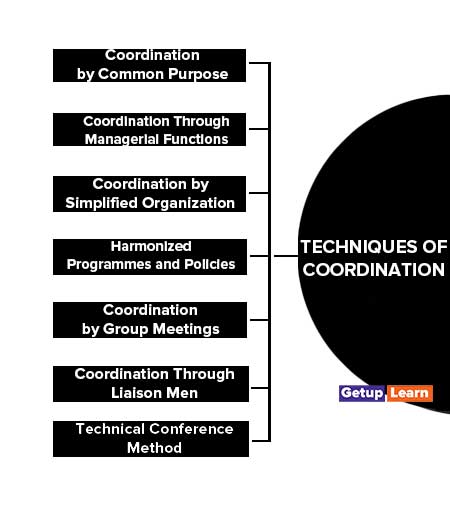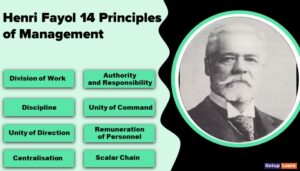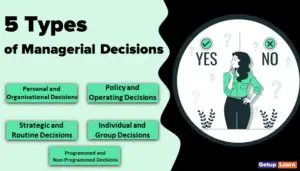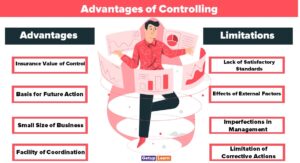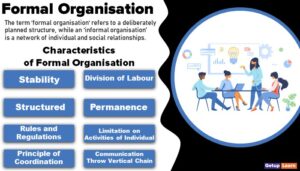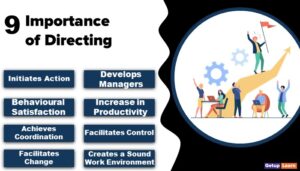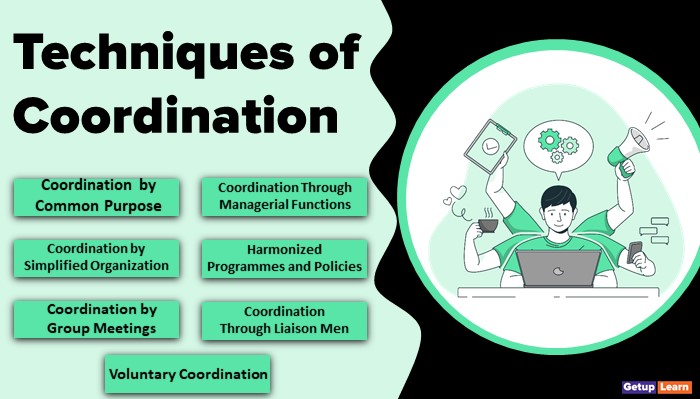
Table of Contents
Techniques of Coordination
The following are the important techniques of coordination which are widely used by modern management:
- Coordination by Common Purpose
- Coordination Through Managerial Functions
- Coordination by Simplified Organization
- Harmonized Programmes and Policies
- Coordination by Group Meetings
- Coordination Through Liaison Men
- Voluntary Coordination
Coordination by Common Purpose
The oldest, as well as the most important device for achieving coordination, is the supervisor. The main duty of a supervisor is to see that his subordinates are working in an efficient manner. He directs them, commands them and controls their efforts.
According to Webber, by commanding, managers and supervisors can coordinate the efforts of their instructions and by direction and motivation, they can coordinate their efforts. If the span of management is limited, this technique will be very effective in comparison to others.
In the words, A manager, in managing, must coordinate the work for which he is accountable, by balancing, timing and integrating it. By L.A. Allen
Coordination Through Managerial Functions
Of the different phases of managerial functions, some aspects like communication, leadership and authority delegation also have unique contributions towards coordination. Effective communication is basic to proper coordination. Communication of information is necessary for making adjustments in plans and preparing programmes for the future.
- Planning is necessary to ensure the proper utilization of human and non-human resources. This pursuit brings about coordination in the organization.
-
Organizing relates to determining and providing human and non-human resources to the organizational structure. For this, coordination is needed.
- Staffing involves manning the organization structure through the proper and effective selection, appraisal and development of personnel to fill the roles designed in the structure. Effective staffing involves coordinating these sub-functions effectively.
- Direction is that inert-personnel aspect of management which deals directly with influencing, guiding, supervising, and motivating sub-ordinate for the achievement of organizational goals, one of which is coordination.
- Controlling is the measurement & correction of the performance activities of subordinates in order to make sure that the enterprise objectives and plans desired to obtain them as being accomplished. Effective controlling paves the way for effective coordination.
Coordination by Simplified Organization
The organization is an essential device for achieving coordination. In modern large-scale organizations, there is a tendency towards over-specialization. It leads to bureaucracy and division in different departments.
So, some benefits of specialization should be sacrificed and such an organizational structure should be developed in which the authority and functions of several departments will be clearly defined but interacting. Re-arrangement of departments may also be considered to bring about greater harmony among the various wings of the organization.
Harmonized Programmes and Policies
Excellent opportunities for coordination are provided by the process of planning. The plans prepared by different individuals and departments should be checked for consistency. The management must ensure that all plans add up to the unified programme.
Coordination by Group Meetings
Group meetings are also effective for achieving a high quality of coordination. Such meetings bring the officials together and provide opportunities for coordination.
Coordination Through Liaison Men
For external coordination, it is a very important and popular device nowadays. Mostly, the large organization employs liaison officers to maintain relations with the government and other agencies.
Voluntary Coordination
Coordination by self-co-ordination was proposed by Brown and Sinon. Coordination should not be imposed from the above. Ideal coordination is voluntary coordination.
This can be secured by installing dominant objectives among people, developing, generally accepted customs, encouraging informal contacts, providing for inter-personal and inter-departmental contacts and using committees for the informal exchange of ideas and views.
What are the techniques of coordination?
The following are the techniques of coordination:
1. Coordination by Common Purpose
2. Coordination Through Managerial Functions
3. Coordination by Simplified Organization
4. Harmonized Programmes and Policies
5. Coordination by Group Meetings
6. Coordination Through Liaison Men
7. Voluntary Coordination.

